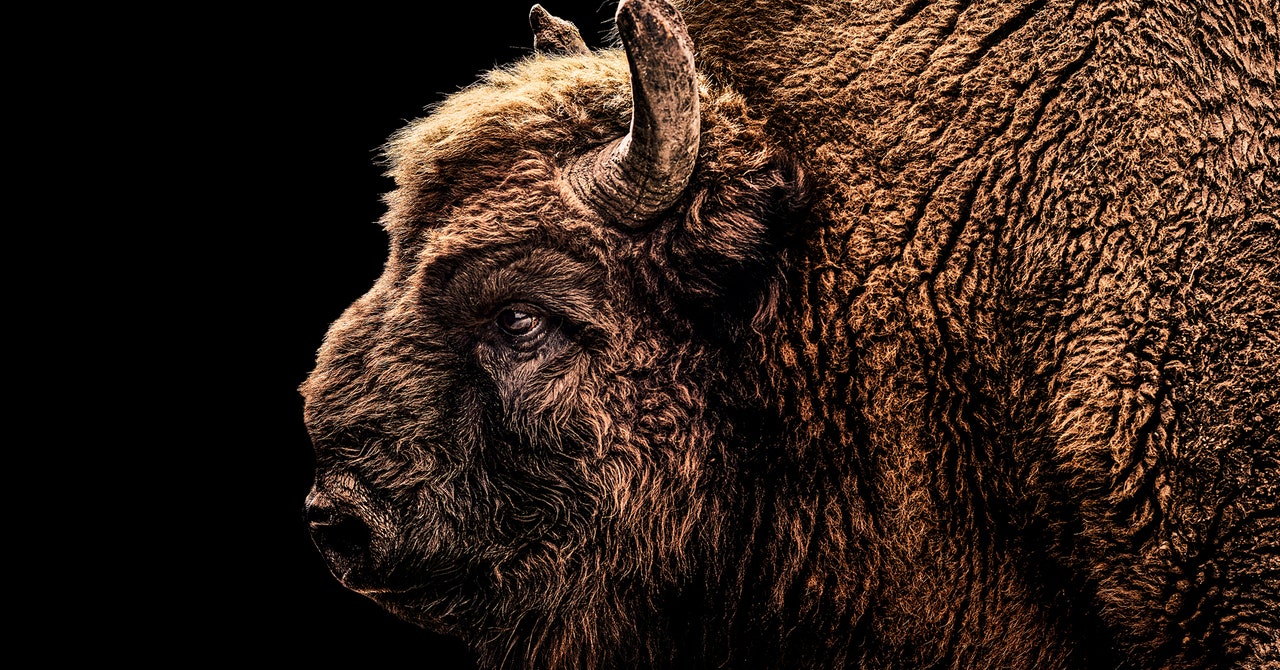
The Wilder Blean project, like many of its ilk, is inspired largely by the work of Dutch ecologist Frans Vera. In his influential book Grazing Ecology and Forest History, published in 2000, Vera questions the prevailing wisdom that vegetation in the lowlands of central and western Europe used to be dominated by closed forest. As a result of this assumption, he writes, farming has been given a lot of credit for increasing biodiversity, as grazing livestock creates different types of vegetation. But Vera argues that this theory ignores the impact of wild animals, and especially large herbivores, which could have played a similar role in creating more diverse landscapes.
To make his argument (which is not without objection), Vera draws on evidence including the effects of wildebeests grazing in the Serengeti and prehistoric pollen samples, and concludes that conservationists today need to update their frame of reference. He calls for large areas to be left free from farming and forestry, and for the reintroduction of once-wild mammals. “Cattle, horses, bison, red deer, elk, roe deer, and wild boar will have to be able to operate as wild animals once again,” he writes. “Without these ungulates the survival of the natural diversity is impossible in the long term.”
Not all herbivores are made equal when it comes to ecosystem-engineering. Bison occupy an intermediate position with regard to feeding habits; they are both grazers, eating grass, and browsers, tackling woody vegetation such as tree branches. And they eat a lot. “Debarking a tree or a shrub over a year or a few years has much more impact than taking some leaves off every now and then,” says Kemp. For this reason, several rewilding projects in mainland Europe have introduced bison, including one in the dunes of Kraansvlak on the Dutch coast, which the Wilder Blean team visited in preparation.
While Kunzmann gathers vegetation data on the ground, Robbie Still takes a macro view. As Kent Wildlife Trust’s GIS and remote sensing officer, he is in charge of the tech at the project—a sort of conservational Q. The team plans to get aerial images of the entire site at a resolution of 20 centimeters by sending up a DJI Matrice drone and methodically flying it above the tree line. “We’re not just on the remote control zooming around; it goes up and follows a very preplanned route,” Still says.
He will process the images with the open source software OpenDroneMap, using different sensors and tools to glean information about the vegetation. In addition to overall coverage, he can tell the width of trees by measuring the diameter of their canopy and their height by measuring the difference between the position of the drone and the objects it senses. Given that the woods was previously home to conifer plantations, much of it consists now of younger, smaller trees arranged in rigid rows—not ideal for biodiversity. “We’d hope that it will even out so it’s much more heterogeneous,” he says.
Using multispectral imaging, which picks up ultraviolet and infrared light as well as the visible spectrum, Still can even tell whether a tree is deciduous or coniferous based on the color signatures of the leaves: The deeper greens of conifers are distinguishable from the lighter palette of deciduous plants. This imaging could even give a sense of the trees’ health: Chlorophyll, the pigment responsible for photosynthesis, absorbs visible light, while plant cells reflect near-infrared light. Algorithms that calculate the difference between the various reflected wavelengths can give a sense of how much a plant is photosynthesizing—an indicator of its general fitness.
Still’s team conducted their first drone survey in the spring of 2022, when the trees were in leaf. They’ll repeat the survey a year later (after the bisons arrive) to see what’s changed. “Monitoring is incredibly important in ecology, but it’s often overlooked,” Still says. “Not because of any one oversight, just because of time.”


